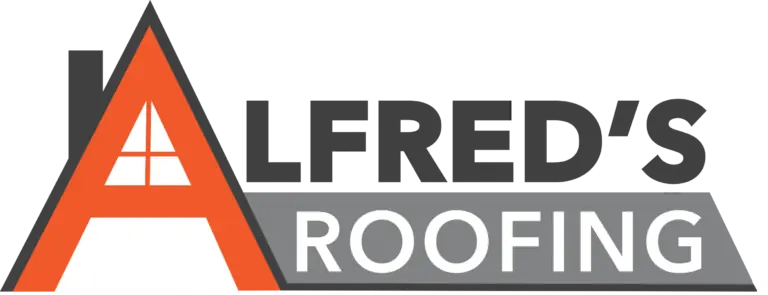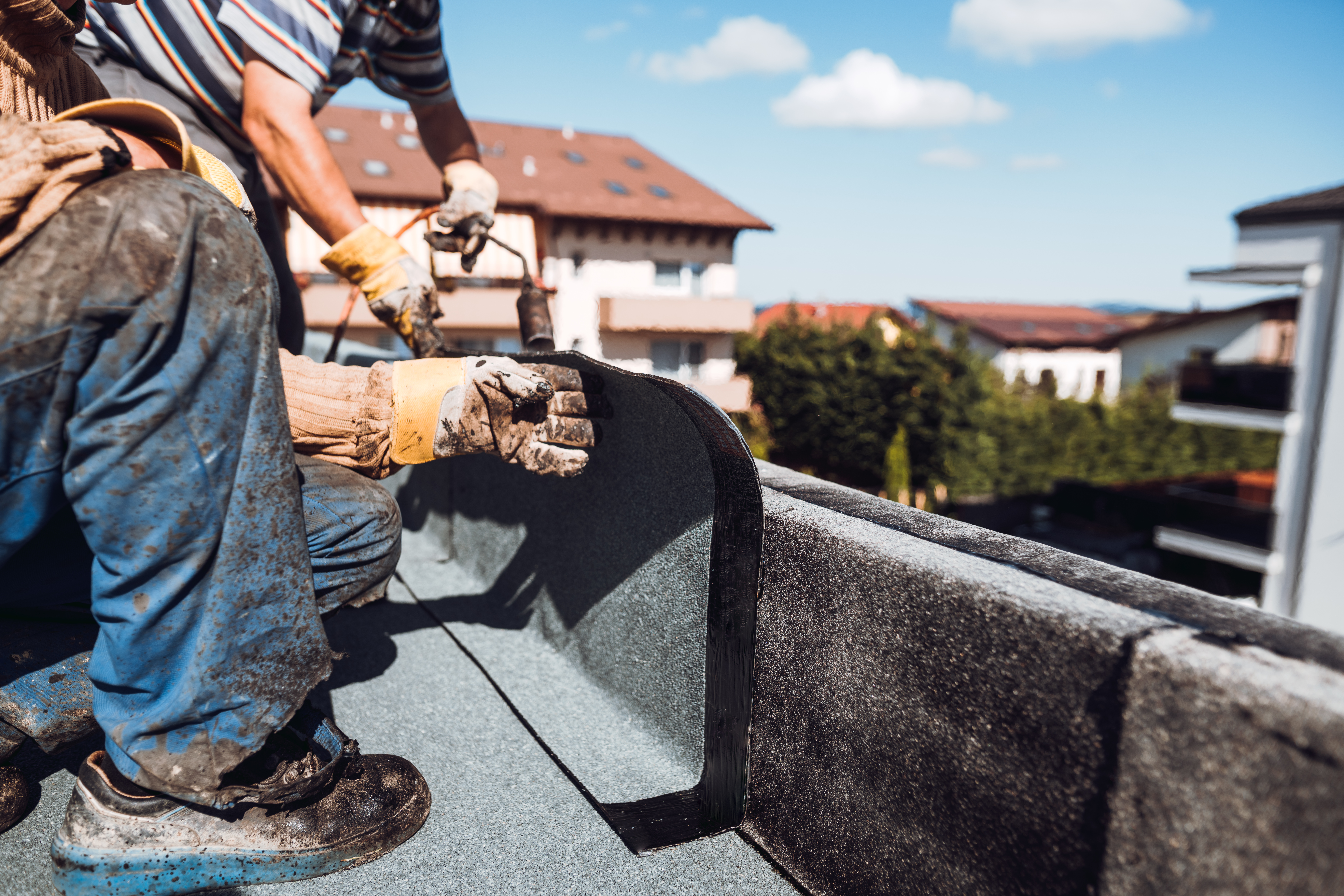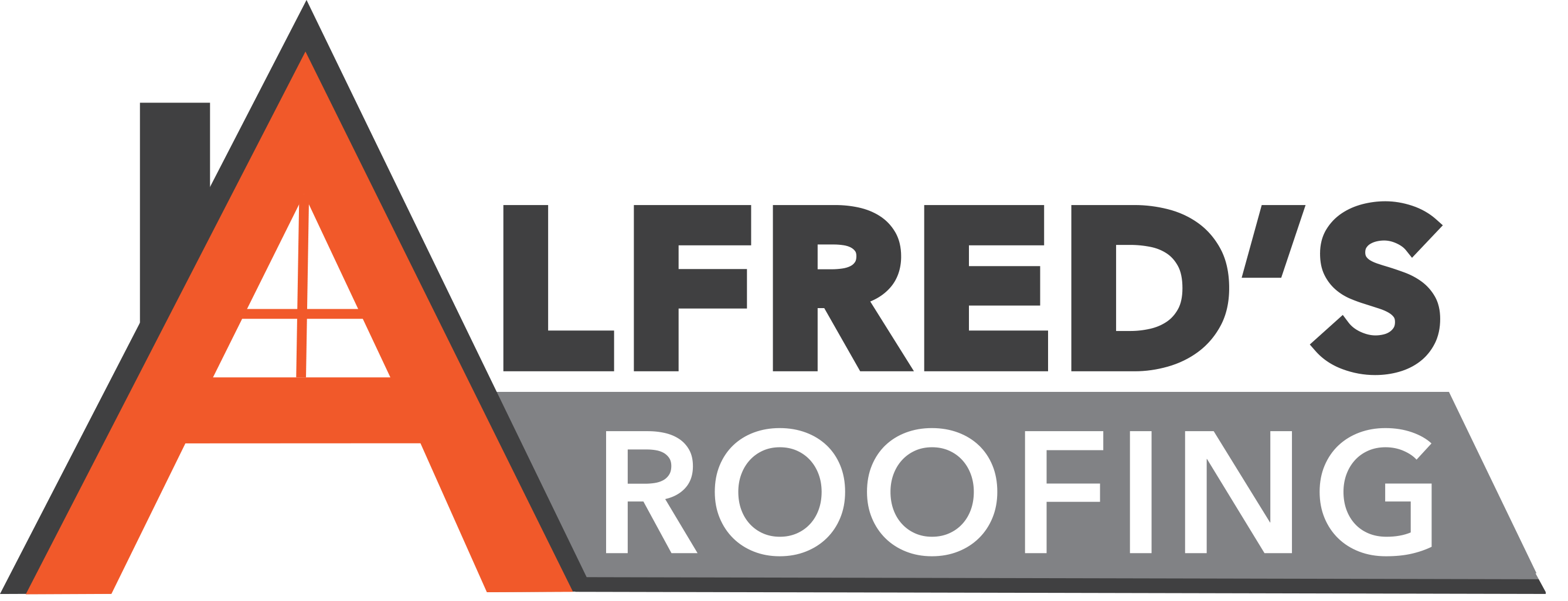Flat Roofing Overview and Importance
When it comes to roofing, one option that often stands out for its practicality and aesthetic flexibility is flat roofing. Flat roofs are not just a hallmark of modern commercial architecture; they’re increasingly popular in residential buildings, especially in areas where maximizing space and modern design are priorities.
Flat roofing offers a straightforward installation process and provides an excellent canvas for various uses such as green roofs, rooftop patios, and solar panel installations. Its unique structure also allows for easier access for maintenance and repairs compared to more steeply pitched roofs.
However, choosing to install a flat roof on your home in Vancouver, WA, comes with a set of considerations. It’s crucial to understand the different materials and designs available, their respective maintenance needs, and how they align with your local climate and architectural style. Making an informed decision requires weighing the advantages of space utilization and aesthetics against the challenges of ensuring proper drainage and durability.
In a nutshell, flat roofing can be a superb choice for homeowners looking for a versatile and modern roofing solution, provided they’re prepared to engage with the specific maintenance and design considerations that come with it.
Types of Flat Roofs
When it comes to flat roofing, there’s no one-size-fits-all solution. The best choice for your building depends on various factors, including climate, building use, and budget. Let’s break down the three main types of flat roofs: Built-Up Roof (BUR), Modified Bitumen Roof (MBR), and Rubber Membrane Roof (EPDM).
Built-Up Roof (BUR)
What is it? The BUR system is like the grandfather of flat roofing. It’s built layer by layer on your roof, starting with a base sheet, then layers of waterproof material and hot tar, topped with gravel. It’s been around since the 1800s!
- Pros: Gravel on top makes it fire retardant, and it’s the most budget-friendly option. Plus, it looks pretty neat if you have windows overlooking the roof.
- Cons: It’s heavy, so your roof structure needs to be strong. It can be smelly and messy to install, and finding leaks can be a detective game.
Modified Bitumen Roof (MBR)
What is it? Think of MBR as BUR’s younger, cooler sibling. It’s a single-ply rolled roof with layers that are either torched down or peel-and-stick. It’s a bit like putting down a giant sticker on your roof.
- Pros: The peel-and-stick variety is DIY-friendly. It reflects heat, helping to keep energy bills down.
- Cons: The torch-down method is a fire hazard. It’s not as durable against scuffs or tears compared to EPDM.
Rubber Membrane Roof (EPDM)
What is it? EPDM is the new kid on the block. It’s a single-ply membrane made from synthetic rubber, designed to withstand all sorts of weather conditions without breaking a sweat.
- Pros: It’s lightweight and resistant to scuffs and tears. Leaks? No problem, they’re easy to patch.
- Cons: The standard black material absorbs heat, so it might not be the best choice for hot climates unless you opt for a light-colored coating, which can add to the cost.
Choosing between these types of flat roofs comes down to balancing cost, durability, installation ease, and maintenance needs. Whether you’re looking for the most budget-friendly option, the easiest to DIY, or the most durable in harsh weather, there’s a flat roofing material out there that’s perfect for your project. The right maintenance can extend the life of your flat roof, no matter which material you choose.
Best Materials for Flat Roofing
When it comes to flat roofing, the material you choose is crucial. It’s like picking the right shoes for a marathon; you need something that will last, protect, and offer comfort (energy efficiency, in this case) throughout its life. Let’s dive into the top contenders: Bitumen, EPDM, TPO, and PVC.
Bitumen
Imagine a shield that keeps your building safe from water leaks. That’s Bitumen for you. It’s a time-tested warrior against the elements, known for its durability and cost-effectiveness. Bitumen roofs are made by layering this material with reinforcing fabrics, creating a barrier that’s tough to penetrate.
- Pros: Affordable, proven track record, and easy to repair.
- Cons: It can be messy to install and isn’t the most environmentally friendly option.
EPDM (Ethylene Propylene Diene Monomer)
EPDM is like the flexible yoga instructor of roofing materials. It can stretch and move with your building, resisting cracks and splits. It’s a synthetic rubber that’s particularly good at withstanding harsh UV rays, ozone, and extreme temperatures.
- Pros: Long lifespan, resistant to extreme weather, and relatively easy for professionals to install.
- Cons: Its black color can absorb a lot of heat, which might increase cooling costs unless you opt for a lighter-colored coating.
TPO (Thermoplastic Polyolefin)
TPO is the new kid on the block, gaining popularity for its energy efficiency. It reflects UV rays, keeping buildings cooler and slashing energy bills in the process. It’s a single-ply roofing membrane that welds together at the seams for a watertight finish.
- Pros: Energy-efficient, resistant to mold, dirt, and punctures.
- Cons: Relatively new, so long-term performance is less known. Quality varies between manufacturers.
PVC (Polyvinyl Chloride)
PVC roofing is like the superhero suit of materials. It’s tough against chemicals, fire, and extreme weather. This material is similar to TPO in its white, reflective surface but has been around longer, proving its worth and durability.
- Pros: Long-lasting, energy-efficient, and highly resistant to chemicals and fire.
- Cons: Can be more expensive than other options.
When choosing the right material for your flat roofing project, consider:
- Climate: Hot climates benefit from reflective materials like TPO and PVC, while colder areas might do well with EPDM.
- Building Use: If your roof will see a lot of foot traffic, PVC and Bitumen offer good durability.
- Budget: Bitumen and EPDM tend to be more budget-friendly, but investing in TPO or PVC can save on energy costs in the long run.
Each material has its unique strengths and potential drawbacks. It’s about matching your specific needs with the right material’s features. Whether it’s the cost-effectiveness of Bitumen, the durability of EPDM, the energy efficiency of TPO, or the chemical resistance of PVC, there’s a flat roofing option out there that’s perfect for your building.
Installation and Maintenance
When it comes to flat roofing, the journey from selection to implementation and beyond involves a series of crucial steps. Let’s break them down into digestible parts: the installation process, regular maintenance, leak detection, and repair techniques.
Installation Process
The installation of a flat roof begins with a clean, level surface. It’s essential to remove any debris, old roofing materials, or other obstacles that could impede the new roof’s installation. The next step involves laying down insulation, which is critical for energy efficiency. The insulation layer is followed by the installation of the chosen flat roofing material, be it Bitumen, EPDM, TPO, or PVC.
Each material has its specific method of installation. For instance, EPDM roofing involves rolling out large sheets and adhering them to the insulation layer, often with the use of specialized adhesives. TPO and PVC materials, on the other hand, may be mechanically attached or adhered, and their seams are typically heat-welded to create a watertight seal.
Regular Maintenance
Once your flat roof is installed, regular maintenance is key to extending its lifespan and maintaining its integrity. This includes:
- Cleaning: Removing debris and dirt that can accumulate and retain moisture.
- Inspection: Conducting semi-annual inspections to check for signs of wear and tear, especially after extreme weather conditions.
- Drainage: Ensuring that the roof’s drainage system is clear and functioning to prevent water ponding.
Leak Detection
Detecting leaks early can save you from extensive and costly repairs. Look out for signs such as water stains on ceilings, mold growth, or a noticeable drop in energy efficiency. An infrared inspection can be a non-invasive way to identify moisture beneath the roofing membrane, allowing for targeted repairs.
Repair Techniques
When damage is detected, timely repairs are crucial. For small punctures or tears in EPDM or TPO roofs, a patch of the same material can often be applied. More extensive damage might require a section of the roofing to be replaced. In cases where the roof is nearing the end of its lifespan or is extensively damaged, a silicone restoration membrane system or a spray foam roofing system can offer a rejuvenating solution without a complete tear-off.
By understanding the installation and maintenance requirements of flat roofing, you can ensure that your roof performs well for years to come. The key to a long-lasting flat roof is not just in choosing the right material but also in committing to regular maintenance and prompt repairs. With the right approach, your flat roof can provide reliable protection and performance, making it a valuable part of your building’s structure.
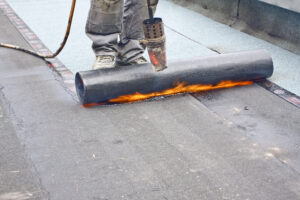
Advantages and Disadvantages of Flat Roofing
When it comes to flat roofing, there’s a lot to consider. From the initial cost to how long it will last, every building owner wants to make sure they’re making the right choice. Let’s break down the pros and cons.
Cost-Effectiveness
Pros: Flat roofs are generally more cost-effective upfront compared to pitched roofs. The materials and the installation process are usually less expensive because they’re simpler and quicker to install. This means you save money both on labor and materials.
Cons: While the initial cost is lower, maintenance and repair costs over time can add up, especially if not properly maintained. This could make flat roofs more expensive in the long run.
Durability
Pros: Modern flat roofing materials, like EPDM, TPO, and PVC, are highly durable. They’re designed to resist UV rays, punctures, and even some chemicals. This makes them a strong contender for a long-lasting roofing solution.
Cons: Despite their durability, flat roofs are more prone to water pooling. If not addressed, this can lead to leaks and water damage, compromising the roof’s integrity over time.
Installation Ease
Pros: Flat roofs are relatively easy and quick to install. This not only speeds up the construction process but also reduces labor costs. The simplicity of the installation means it’s easier to find qualified contractors capable of doing a good job.
Cons: The ease of installation doesn’t eliminate the need for expertise. Poor installation can lead to significant issues down the line, including leaks and structural damage.
Maintenance Challenges
Pros: Accessibility makes flat roofs easier to inspect and maintain. This can help in identifying potential issues early before they become major problems.
Cons: Despite being easier to access, flat roofs require more regular maintenance than pitched roofs. Debris and water pooling need to be regularly cleared to prevent damage.
Lifespan
Pros: With proper maintenance, some flat roofing materials can last up to 30 years. This makes them a viable long-term option for many buildings.
Cons: The lifespan of a flat roof can be significantly shorter than that of pitched roofs if not properly maintained. Regular inspection and maintenance are critical to maximizing a flat roof’s lifespan.
In conclusion, flat roofing offers a mix of advantages and disadvantages that make it suitable for many but not all situations. The key to getting the most out of a flat roof is understanding these pros and cons and making informed decisions based on your specific needs and circumstances. Whether it’s the cost-effectiveness, durability, or ease of installation that appeals to you, maintenance is the golden rule. Without it, even the best flat roof can fall short of its potential lifespan.
Moving forward, choosing the right flat roofing for your building involves considering several factors, including climate, building use, and energy efficiency. Let’s explore how to make the best choice for your situation.
Choosing the Right Flat Roofing for Your Building
When it comes to picking the right flat roofing, it’s not a one-size-fits-all situation. You’ve got to think about the weather, what your building is used for, how much walking will be done on the roof, and how to keep energy costs down. Let’s break it down:
Climate Considerations
Different materials react differently to various weather conditions. For example, EPDM (a rubber membrane) is great for areas with lots of rain and snow because it’s waterproof and durable against freezing temperatures. On the other hand, TPO and PVC materials reflect sunlight, making them perfect for hotter climates to keep buildings cooler and reduce air conditioning costs.
Building Use
What your building is used for plays a big role in choosing your flat roofing. If it’s a commercial space with heavy equipment on the roof, you’ll need a sturdy option like Built-Up Roof (BUR) which can handle the weight. For residential buildings or those with less heavy-duty needs, a Modified Bitumen Roof (MBR) could be a more cost-effective choice.
Foot Traffic
If you plan to use your roof as a garden, patio, or for any activity that means people will be walking on it, durability is key. PVC roofing is tough and can handle foot traffic better than some other options. It’s also easy to repair if a section gets damaged, making it a practical choice for accessible roofs.
Energy Efficiency
Saving on energy bills is always a plus. Light-colored or reflective roofing materials like TPO can help keep your building cooler by reflecting sunlight away. If you’re in a colder climate, consider materials that offer better insulation to keep the heat in, such as EPDM. Adding a layer of insulation under your flat roof can also boost its energy efficiency, no matter the material.
Choosing the right flat roofing comes down to balancing these factors with your budget and long-term maintenance plans. A slightly higher upfront cost might save you money in the long run through lower energy bills and fewer repairs.
Before making a decision, it’s wise to consult with a professional roofing contractor who understands the local climate and can provide insights into how different materials perform over time. Alfred’s Roofing has the experience and knowledge to guide you through this process, ensuring you make the best choice for your specific needs and circumstances.
Keep these considerations in mind. Next up, we’ll tackle some of the most frequently asked questions about flat roofing to help clear up any uncertainties you might have.
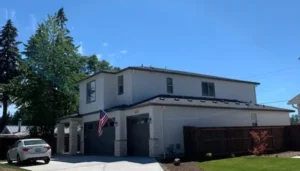
Frequently Asked Questions about Flat Roofing
When it comes to flat roofing, there are a few questions that come up time and again. Let’s dive into these and provide some straightforward answers.
What is the Cheapest Option for a Flat Roof?
The most budget-friendly option for a flat roof is typically Modified Bitumen Roof (MBR). It’s a bit like the traditional asphalt shingles but for flat roofs. MBR involves layers of bitumen (a type of asphalt) and reinforcing fabrics that create a finished membrane. It’s not just affordable; it’s also relatively easy to install, which can save on labor costs.
How Long Can a Flat Roof Last?
The lifespan of a flat roof depends largely on the material used and how well it’s maintained. Here’s a quick rundown:
- Built-Up Roof (BUR): Can last 15-30 years with proper maintenance.
- Modified Bitumen Roof (MBR): Typically lasts 10-20 years.
- Rubber Membrane Roof (EPDM): Known for durability, an EPDM roof can last 20-35 years.
Regular maintenance can significantly extend the life of any flat roof.
What is the Best Material for a Flat Roof in a Hot Climate?
In hot climates, you want a material that reflects the sun’s rays and doesn’t absorb too much heat. Thermoplastic Olefin (TPO) and Polyvinyl Chloride (PVC) are excellent choices for these environments. Both materials are light-colored and highly reflective, which can help keep your building cooler and reduce air conditioning costs. Additionally, they are resistant to UV light, ozone, and chemical exposure, making them durable options for areas with intense sunshine.
Choosing the right flat roofing material and maintaining it properly can make a huge difference in your roof’s lifespan, performance, and cost-effectiveness. Whether you’re looking for the most affordable option, the longest-lasting material, or the best choice for a hot climate, there’s a flat roofing solution that can meet your needs.
With this knowledge in hand, you’re well-prepared to make informed decisions about your flat roofing project. Alfred’s Roofing is here to help you every step of the way, ensuring your flat roof is a success.
Conclusion
Alfred’s Roofing: Your Trusted Partner in Flat Roofing
Choosing the right partner for your flat roofing project is crucial. It’s not just about installing a roof; it’s about making a long-term investment in the protection and efficiency of your building. That’s where we come in. At Alfred’s Roofing, we understand the importance of your decision and are committed to being your trusted partner in flat roofing.
Our experience and dedication to quality services and customer satisfaction set us apart. We use only the best materials for flat roofing, ensuring durability, energy efficiency, and cost-effectiveness. Whether you’re considering EPDM, TPO, or PVC, we have the expertise to guide you to the best solution for your specific needs.
We pride ourselves on our transparent communication and thorough approach. From the initial consultation to the final inspection, we’re with you every step of the way. Our team is skilled in the latest installation techniques and maintenance practices to ensure your flat roof lasts for years to come.
The advantages of flat roofing are clear, from cost-effectiveness to design flexibility. However, choosing the right material and ensuring proper installation and maintenance are key to maximizing these benefits. With Alfred’s Roofing, you can rest assured that your flat roofing project is in good hands.
Our commitment to excellence extends beyond the completion of your project. We offer comprehensive preventative maintenance plans to keep your flat roof in top condition, protecting your investment and extending its lifespan.
In choosing Alfred’s Roofing, you’re not just getting a roofing contractor; you’re gaining a partner dedicated to ensuring the success of your flat roofing project. Let us help you enhance and protect your building with a high-quality, durable flat roof.
For a free consultation and to learn more about our flat roofing services, visit our service page. Invest in your future with Alfred’s Roofing, where quality and customer satisfaction are our top priorities.
